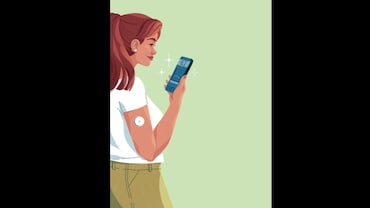- HOME
- /
- Health & Wellness
- /
- Health
- /
House Calls: Are Tele-Health Appointments Effective?
When done right, virtual appointments can benefit everyone
 Illustration: Delphine Meier
Illustration: Delphine Meier
Last year, Covid-19 forced many aspects of our lives online, and medicine was no exception. We had to avoid non-essential outings, including some visits to hospitals and doctors’ offices. So, patients swapped in-person appointments for phone and video chats. Google searches on the telehealth approach spiked.
Virtual visits are well-suited to many medical tasks, including simple ones like refilling prescriptions, as well as diagnosing and treating conditions that rely on a doctor’s sense of sight—pink eye, rashes, varicose veins—or a patient’s description of symptoms, such as back pain and sore throat. Telehealth also excels at monitoring chronic conditions, such as congestive heart failure, where doctors don’t need to provide a new diagnosis but rather check up on patients, monitor new symptoms and discuss side effects of medication. Diabetes is also a good fit: people can electronically share their blood-sugar levels, dosing and other information for a nurse to review.
Mental-health counselling is easy to access virtually, too, though it comes with pros and cons. Therapists may not be able to see body language, which can sometimes be a clue to understanding a client’s well-being. On the other hand, some patients like it better—as do many providers, says Annette Totten, an associate professor at Oregon Health and Science University in the United States who has studied telehealth extensively. “Some even say having that extra bit of distance makes people more honest and less stressed to talk about difficult topics.”
When done right, Totten’s research shows, telehealth benefits health-care providers and patients. It can significantly reduce hospital admissions, which frees beds for people in need of critical care—which has been an especially crucial factor during the pandemic. And it’s more convenient for patients. Says Michelle Greiver, a family doctor in Toronto whose entire practice shifted to telehealth when the pandemic hit, “They don’t have to take time off work or travel to visit our office.”
To ensure visits go smoothly, Totten recommends going into appointments with a list of questions and to ask for written instructions about next steps. Patients can avoid wasting precious minutes during their appointments by ensuring beforehand that their internet connection is working and that they have all the necessary software and hardware.
Of course, sometimes telehealth just doesn’t cut it. “Diagnosis is an art, and doctors take in information from lots of places,” says Totten. “There are things that involve touch or smell that you’re not going to get through telehealth.” For example, doctors regularly use their hands to examine potential tumours, hernias and fractures.
For maternal health, expectant mothers still need to make the trip to the obstetrician. The same is true after birth, since babies can’t communicate their health concerns and regularly need immunizations. And of course urgent health matters—for example, a broken bone, prolonged shortness of breath, symptoms of a heart attack or stroke, etc.—should still push patients to the emergency room.
Griever expects the rise in telehealth use to last well past the end of the pandemic. At her family clinic, she says, almost all of what needs to be done can be taken care of by phone.
“I don’t think we will go back to as many in-person visits as before. It’s just not needed to provide the best possible care.”






